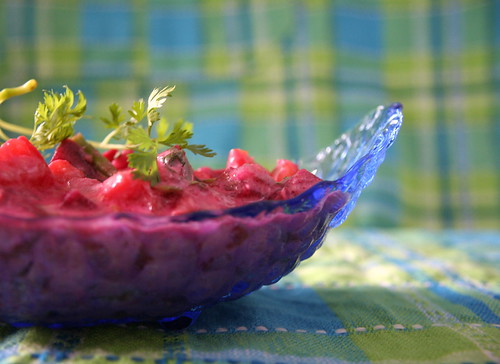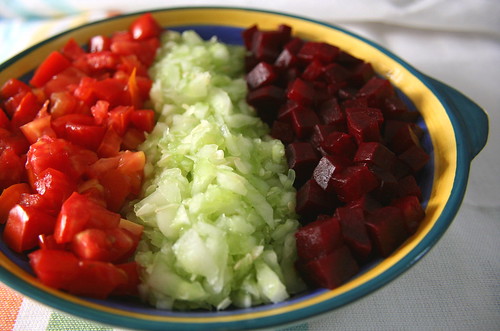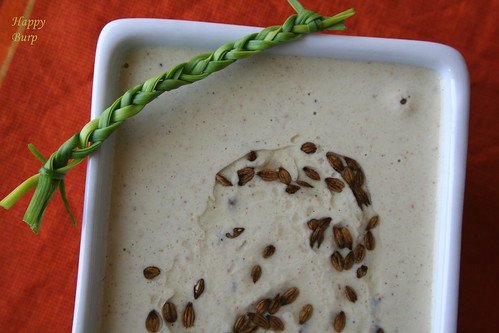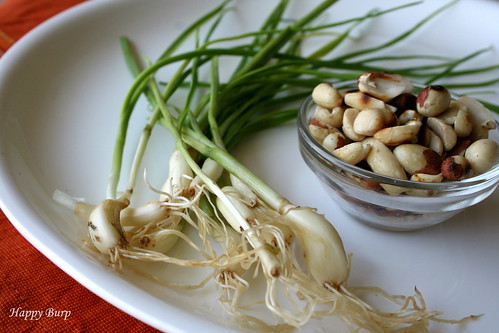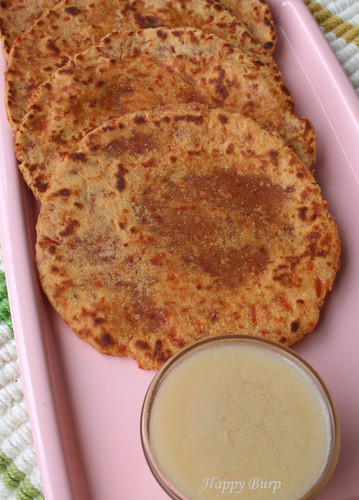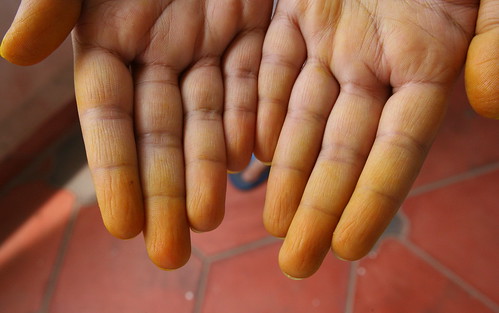A lifebuoy in a boat? :)
One big misconception that got cleared in mind about two years back is that beetroot contains lots of iron. Just like almost everybody else around me, I too used to think beetroot would be a great weapon against Anaemia. But nope, it isn't. It has lots of goodness in it, but no iron.Like it has Folate in it. A nutrient that is of utmost importance just before and after conception. And a lot of fiber, which is of great importance throughout one's life.
The recipe that I have got for you today includes two more virtuous vegetables - cucumber and tomato. Healthy? No doubt. My own recipe idea? No d...... No. :) The original recipe is by Tarla Dalal. But it's a great one, I tell you. Have a look.
Recipe for Beetroot Tomato Cucumber Raita
Serves 4.
Ingredients:
1 cup fresh yogurt, beaten
1 beetroot, boiled and cut into cubes
1 cucumber, chopped
1 large tomato, chopped
2 tbsp roasted, skinned, coarsely crused peanuts
1 green chilli, chopped
2 tbsp grated fresh or dessicated coconut (optional; I use seldom.)
1 tsp sugar
salt to taste
1 tbsp oil
1 tsp cumin seeds
a pinch asafoetida
coriander leaves for garnishing
Method:
1. Mix all ingredients in the first list (upto salt).
2. Heat oil in a Tadka ladle. Take the ladle off the heat and add cumin seeds. Once they splutter, add the asafoetida.
3. Let the Tadka cool a little, then add it to the Raita and mix it well.
Serve with Parathas for brunch or as an accompaniment to any meal.
By the way, this dish has had a 100% success rate at my place so far. None of the times that I have made it when entertaining guests, have I had to put any leftovers back into the fridge. (I make it so complicated!! I could have just said that the bowl is polished off clean. Any idea where you can take Creative Writing classes, Guys?)
